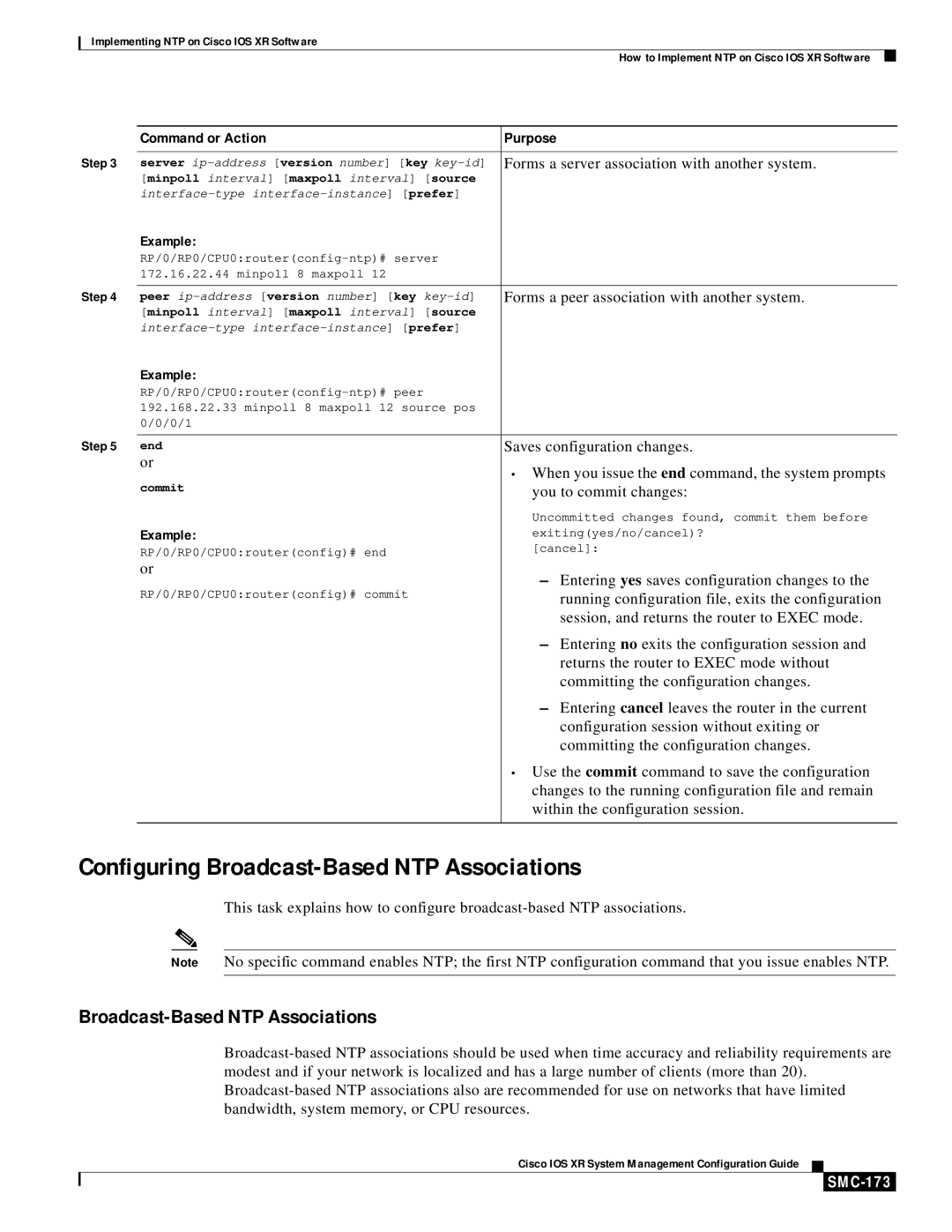
Implementing NTP on Cisco IOS XR Software
How to Implement NTP on Cisco IOS XR Software
| Command or Action | Purpose |
Step 3 |
|
|
server | Forms a server association with another system. | |
| [minpoll interval] [maxpoll interval] [source |
|
|
| |
| Example: |
|
|
| |
| 172.16.22.44 minpoll 8 maxpoll 12 |
|
Step 4 |
|
|
peer | Forms a peer association with another system. | |
| [minpoll interval] [maxpoll interval] [source |
|
|
| |
| Example: |
|
|
| |
| 192.168.22.33 minpoll 8 maxpoll 12 source pos |
|
| 0/0/0/1 |
|
Step 5 |
|
|
end | Saves configuration changes. | |
| or | • When you issue the end command, the system prompts |
|
| |
| commit | you to commit changes: |
|
| Uncommitted changes found, commit them before |
| Example: | exiting(yes/no/cancel)? |
| RP/0/RP0/CPU0:router(config)# end | [cancel]: |
|
| |
| or | – Entering yes saves configuration changes to the |
| RP/0/RP0/CPU0:router(config)# commit | |
| running configuration file, exits the configuration | |
|
| session, and returns the router to EXEC mode. |
|
| – Entering no exits the configuration session and |
|
| returns the router to EXEC mode without |
|
| committing the configuration changes. |
|
| – Entering cancel leaves the router in the current |
|
| configuration session without exiting or |
|
| committing the configuration changes. |
|
| • Use the commit command to save the configuration |
|
| changes to the running configuration file and remain |
|
| within the configuration session. |
|
|
|
Configuring Broadcast-Based NTP Associations
This task explains how to configure
Note No specific command enables NTP; the first NTP configuration command that you issue enables NTP.
Broadcast-Based NTP Associations
Cisco IOS XR System Management Configuration Guide
